Benjamina Ficus
Native to hot countries. In the natural environment, the height of this type of ficus can reach 20 m, but in an apartment it does not exceed 3 meters. Benjamina Ficus is a real sissy. It definitely needs to find a permanent place in the house.
Does not like cold, darkness and drafts, as well as any movements (it can shed leaves even with a simple turn of the pot). Regular spraying of the ficus will do it good. And once a month, the plant needs to be showered. Requires constant monitoring of soil moisture.
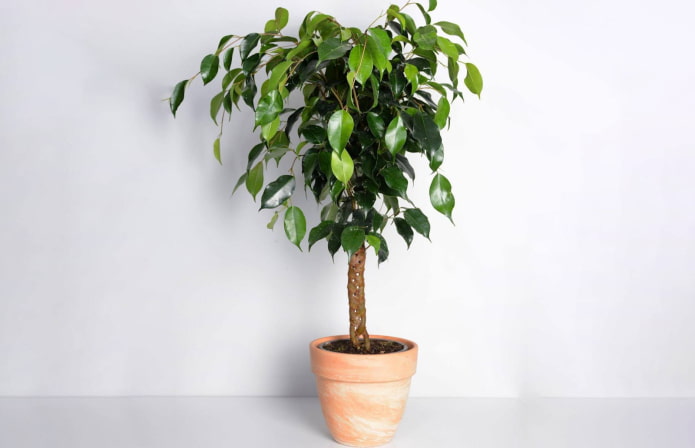
Laurel
Laurel grows up to 1.5-2 meters in height. With the help of pruning, which it is not afraid of, it can be given any shape. Laurel loves lighted places.
Since laurel prefers high humidity, it will be grateful for regular spraying and shower.
On hot summer days, it is recommended to water abundantly, preventing the soil from drying out.
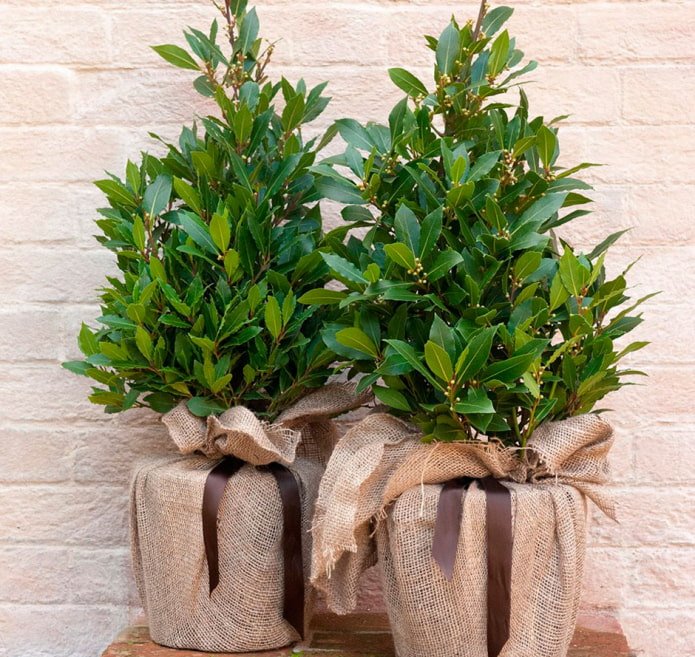
Fig tree
One of the most popular indoor plants. It is also called Ficus lyrata. The tree is distinguished by large dark green leaves of an unusual shape. This Ficus comes from the tropics, which determines its requirements for maintenance and care. It loves moist soil and high air humidity. As for light, give preference to indirect sunlight.
For full growth, try to turn it regularly and do not allow the soil to dry out. In addition, the Fig tree does not like drafts. Otherwise, it will begin to lose its beautiful leaves.
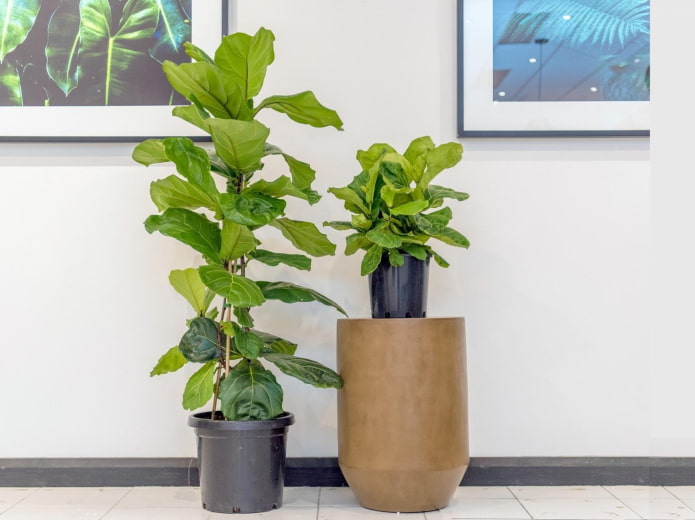
Crassula
This succulent plant quickly grows into a real tree, but in miniature, about one meter high. Requires good drainage and warm, dry conditions.
Reacts negatively to excess moisture. Does not like direct sunlight. In hot weather, the fat woman needs to be showered regularly, preventing water from getting into the soil.
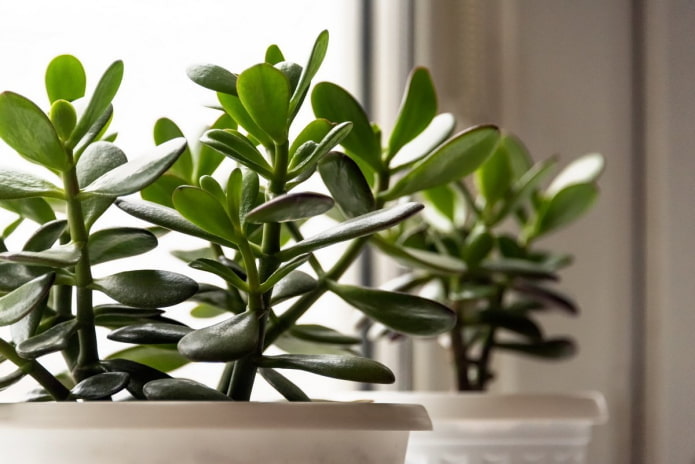
Dracaena
A plant known to many in the form of a tree with a bunch of leaves, which have different shapes and colors in different species. It is unpretentious in care. Dracaena prefers a well-lit place and frequent, but not abundant watering.
Species with dark foliage are less demanding of lighting than specimens with variegated leaves. Spraying the leaves is a must. Dracaena is afraid of drafts, so you should not place it next to a window.
To ensure normal development, it requires a temperature of plus 20 to plus 25 °C. In winter – not lower than 15 degrees Celsius.
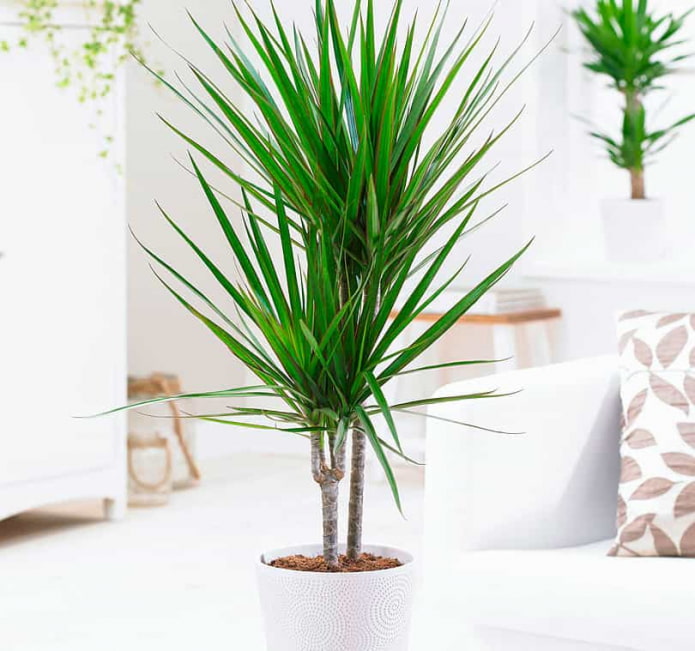
Guianan chestnut
This exotic tree is also called Pachira. At home, you can grow it up to 2 meters high. This tree stands out for its spreading crown with large oval leaves and a thick brown trunk.
Try not to put Pachira in places with direct sunlight, as they can leave burns on the leaves. If you miss a couple of waterings, this will not affect the plant. But it is important that the soil is fertile and loose enough. At home, it practically does not bloom, but it perfectly purifies the air and saturates it with nutrients.
Interesting! Its closest relatives are baobab and durian.
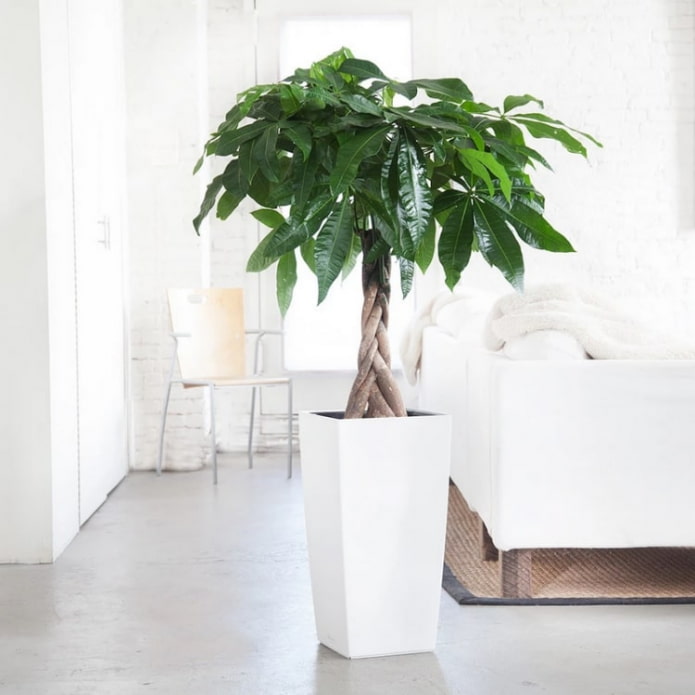
Bottle tree
The trunk of this indoor tree is shaped like a bottle. In the wild, it grows in Mexico and the USA. Scientifically, it is called nolina or beaucarnea. Development is slow – it will take about 6-8 years to form a large trunk.
It has narrow, pointed, palm-shaped leaves. The bottle tree should be grown in small pots. The plant prefers the sun, is not afraid of drought, but still requires periodic spraying.
With abundant watering, the trunk stretches upward, this spoils the appearance of the plant. Therefore, it is necessary to arrange dry periods.
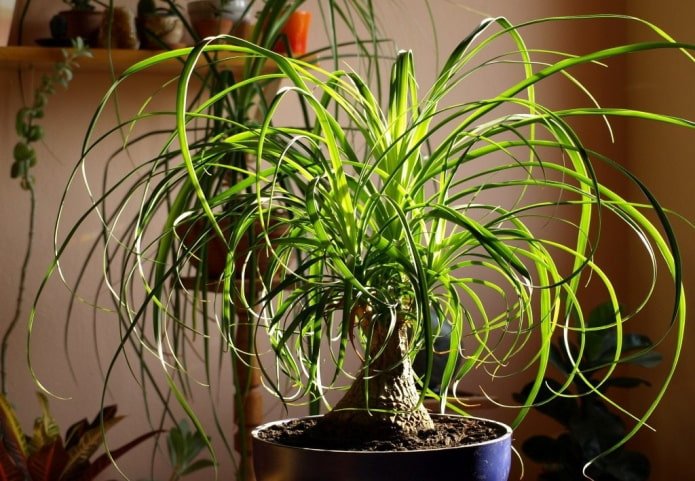
Mandarin tree
An elegant plant will be a bright decoration of any interior. The dwarf mandarin produces a good harvest of fruits, and also protects the surrounding space from annoying insects. Usually grown on windowsills.
The leaves are dense, rich green. Prone to diseases and can be attacked by pests. Therefore, the condition should be under constant control.
You cannot treat the plant with chemicals – it is better to use laundry soap dissolved in water.
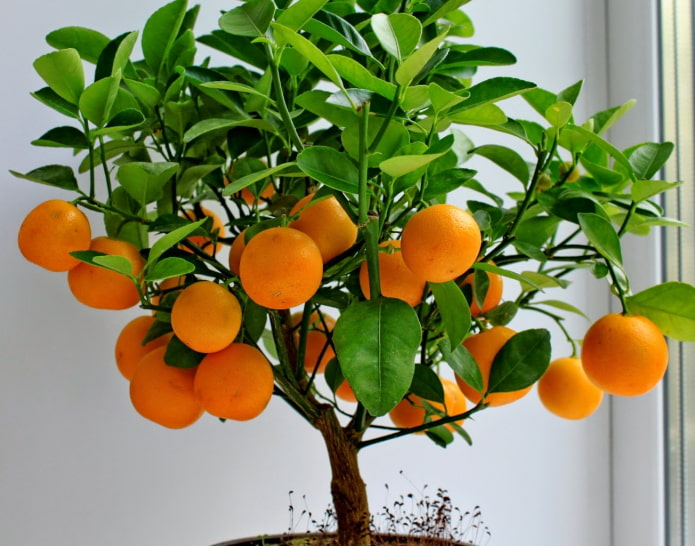
Coffee tree
The maximum height, when grown at home, is no more than 1.5 meters. With ample space and good care, the height of an indoor tree can even be about 3 meters. Avoid drafts, but be sure to provide good ventilation in the room.
A bad neighbor for any indoor plant. The lighting should be bright, but diffused. It is recommended to water depending on the season: moderately in winter, abundantly in spring, summer, autumn. There is no need to wait for the top layer of soil to dry out. The houseplant should be periodically sprayed with warm water.
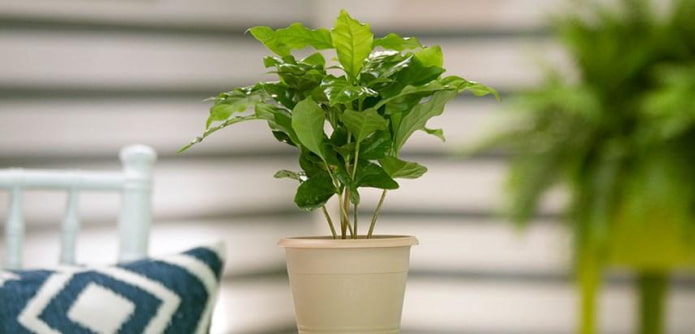
Norfolk pine
An indoor coniferous plant called Araucaria. The uniqueness of this tree is that it changes the shape of its leaves with age. It does not like overwatering and prefers a lot of light. Suitable for busy gardeners. It is important not to forget to replant every year.
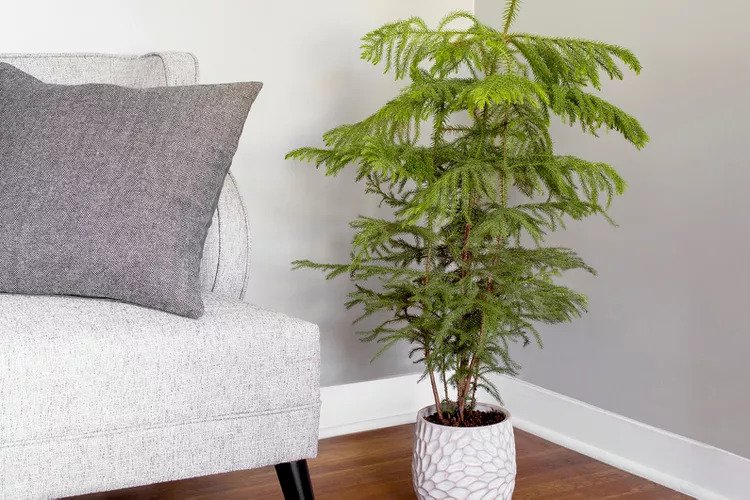

Howea
When grown indoors, it reaches 1.5-2 m. It grows quickly in nutritious soil. This plant has no special requirements for either lighting or air humidity. Tolerates drought well.
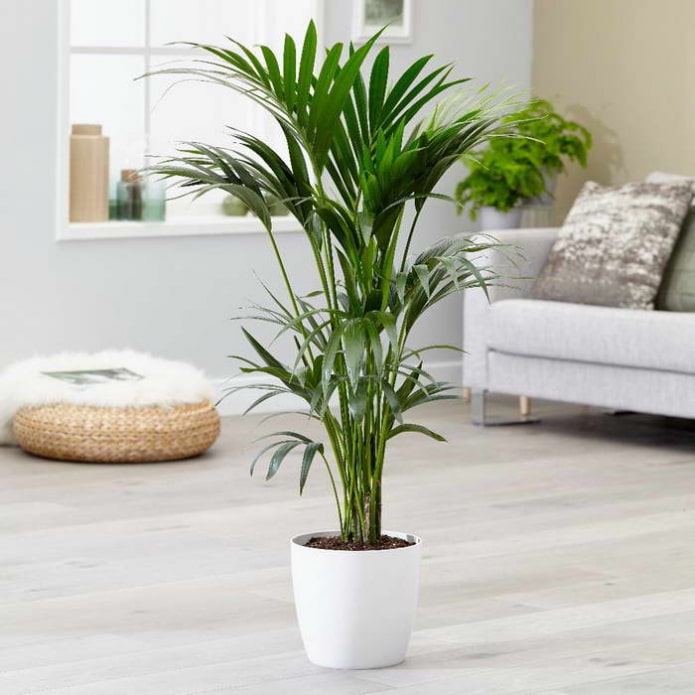
Chinese rose (or hibiscus)
This beautifully flowering plant can grow to gigantic sizes. With increasing age, the size of the crown also increases.
Reacts quite well to formative pruning. Has large scarlet flowers. Unpretentious in care. Its picturesqueness will add brightness to any room.
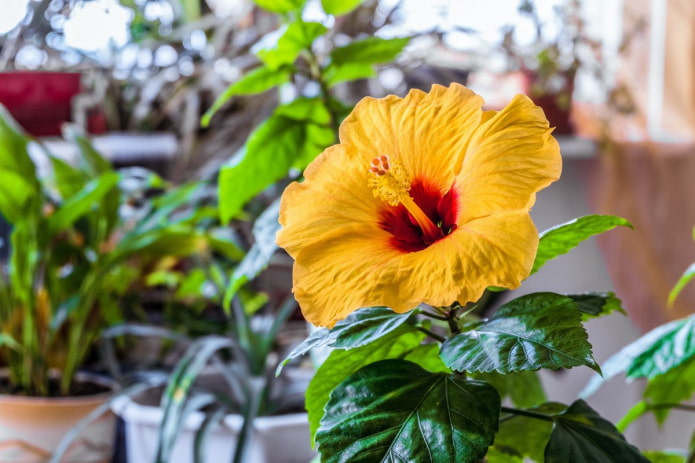
Dieffenbachia
This is a heat-loving plant native to the tropics of South America. The most popular varieties are Camilla and Tropic Marianne. Dieffenbachia loves good lighting, but without direct sunlight. Also, do not place this tree near batteries and try to avoid drafts. Provide the tree with abundant watering and high humidity so that it pleases you with juicy green leaves.
Important! The juice of the dieffenbachia leaves is poisonous, so keep this tree away from children and animals.
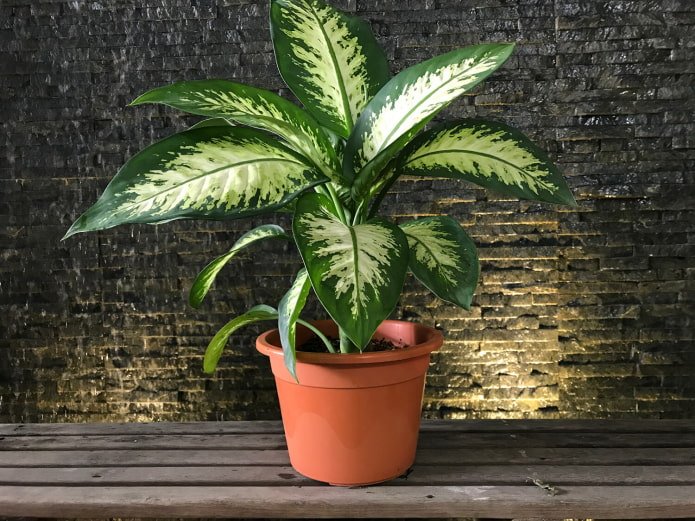
Monstera
It has a tall growth (3-5 m) and a spreading crown. It has large, rich green shiny leaves with symmetrical slits.
Aerial roots form over time in the lower part of the plant, providing it with additional support and nutrition. Therefore, they should not be cut. It rarely blooms.
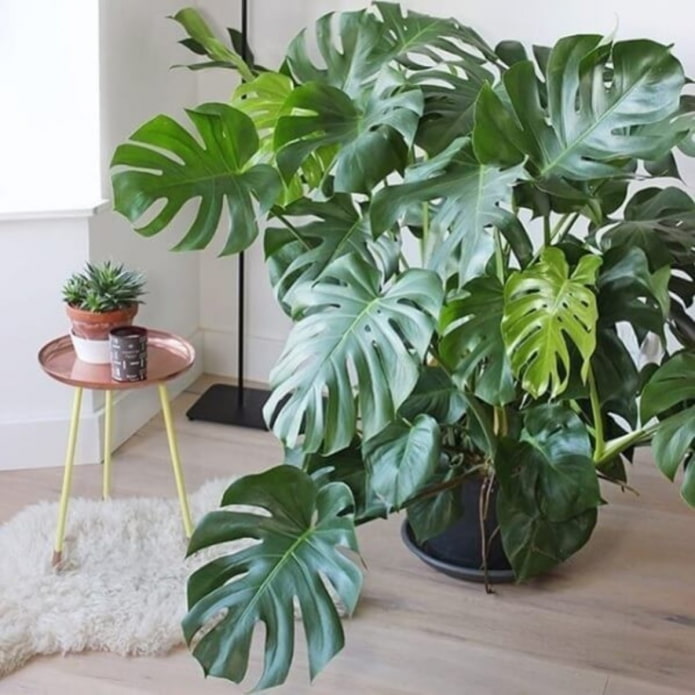
Schefflera
If you provide it with enough sunlight, the plant can grow up to 2.5 meters. But in hot weather, it is better to move the Schefflera to partial shade.
You need to be very careful with watering: insufficient water can lead to loss of foliage, and overwatering can lead to root rot.
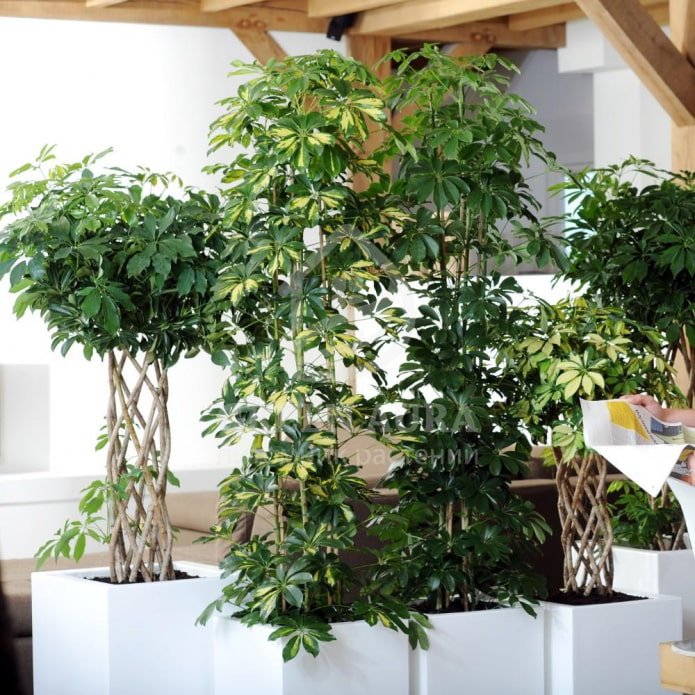
As you can see, indoor trees can be of different types, with flowers and without, fruit-bearing and not. Therefore, it is easy to choose such a plant for yourself, the main thing is to follow the care requirements and then it will delight you for a long time.
Now reading:
- Decorating a Rectangular Room: Tips and 50 Photos for Inspiration.
- elegant flower beds that will perfectly complement your garden walls.
- Design 32 sq. m: 4 stylish projects and key design nuances (26 photos)
- Selecting the width of a roller blind and ways to shorten it yourself.
- Making baskets with crochet: diagrams, images and video tutorials.